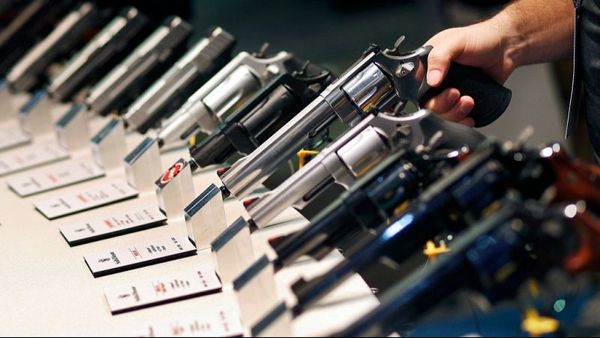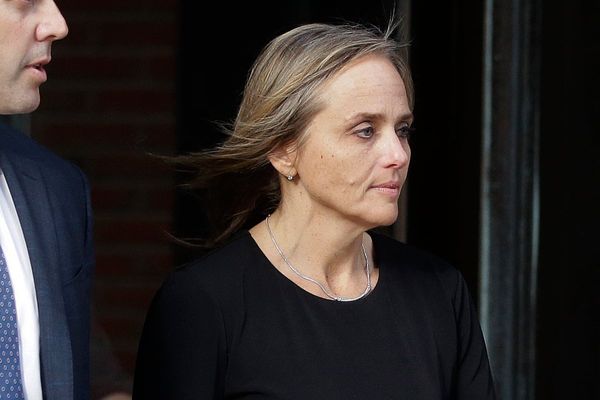
Twin Peaks: The Return might not have been the best TV series of 2017 (according to this poll, at least). Then again, it might not be a TV series at all. Earlier this month, Sight and Sound’s critics’ poll of the finest films of 2017 put David Lynch’s drama at No 2, ahead of Call Me By Your Name, The Florida Project and Dunkirk. The decision prompted howls of rage from snooty cineastes – but it was also quite fitting. Twin Peaks wasn’t interested in being constrained by categories and boxes; it could be anything you wanted it to be.
Still, The Return made most other TV series look small by comparison. It was smarter than most shows, funnier, stranger (obviously), sadder, more terrifying and – during a five-minute scene of a man sweeping a bar-room floor – more boring than most shows. It contained multitudes … and Michael Cera doing a Marlon Brando impression. It was pure televisual maximalism.
Attempting to provide a synopsis is utterly futile, but here goes: 25 years after being confined to the purgatorial dark-space known as the Black Lodge by his evil doppelganger, Kyle MacLachlan’s heroic FBI agent Dale Cooper embarks on a pan-dimensional odyssey to return to his previous form. En route he assumes the identity of a Las Vegas insurance salesman called Dougie Jones (no relation), communicating only in catatonic half-sentences and enthusiastic slurps of coffee.

Meanwhile, his double (McLachlan again, dressed as a satanic biker figure) continued to sow destruction on the Earth, trailed by FBI agent Gordon Cole (played completely convincingly by Lynch). Oh and there was a storyline involving a dwarf with an ice pick . And a box in a New York apartment containing a deadly androgynous spirit. And Monica Bellucci making weird proclamations about being “the dreamer who lives inside the dream”. And about 75 other things too difficult to explain here.
Confused? That’s sort of the point. Every week, viewers tuned in expecting not only the unexpected but the inexplicable, too. A talking electrified brain tree? Check. David Bowie reborn as a giant kettle? Sure. A frog-beetle hybrid that crawled into children’s mouths? Hey, why not? These examples seem entirely nonsensical, yet on the screen they possessed a sort of dream logic. You couldn’t exactly explain what was going on, but on a deeper level you understood it.
Notably, much of this perplexing tale took place away from the town of the show’s title. Twin Peaks and its inhabitants were largely sidelined to the point that you wondered if Lynch was reflexively rebelling against the nostalgia his original series inspired. In this Twin Peaks, Audrey Horne – perhaps the show’s most beloved character – was trapped in a weird domestic purgatory, arguing with her new husband about characters we had never met and storylines we had no investment in.
Yet despite these difficult storylines, there was still heart and poignancy in Lynch’s treatment of his characters. In particular, the scenes with the Log Lady, Margaret Lanterman, were loaded with an almost unbearable emotional weight, given that the actor who played her, Catherine E Coulson, filmed her scenes while dying from cancer.
Three moments from the series seem indelible. There was that opening double episode, a psychotic break from even the groundbreaking postmodern soap opera of the original series, full of fragmented plotting and body horror and the abstract-expressionist fever-dream Lynch has been fine-tuning in this latest phase of his career. Even better was the show’s eighth instalment, a nightmarish, near wordless moodboard of an episode that also served as one of the most convincing arguments for nuclear disarmament you’re likely to see.
And then there was the ending, which I won’t spoil. In fact, I’m not sure I could spoil it, such was its inscrutable nature. Fierce debates are still being had in the furthest corners of the internet about precisely what happened in the show’s final few minutes, though the whys, hows and whens are just as unclear. What was unambiguous was its impact: in its divisiveness, invention and sheer bloody-minded desire to pull its audience out of their comfort zone, this ending was every bit the equal of the Sopranos’ infamous smash-cut. Like the series as a whole, it expanded the potential of what TV could be. If it even was a TV series at all.
(buy here)







